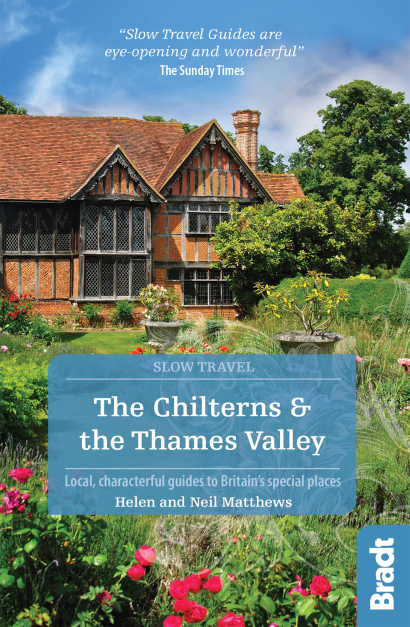Hosts of literary great and beloved writers have lived and worked in the Chilterns and the Thames Valley: from children’s authors (Enid Blyton, Alison Uttley) and murder mystery novelists (Agatha Christie, GK Chesterton), to playwrights (Oscar Wilde, Terence Rattigan, RB Sheridan), poets (Chaucer, Bunyan, Milton, Mase eld, Eliot, Owen) and giants of science fiction and fantasy (Terry Pratchett, Mary Shelley).
Matilda, by Roald Dahl
Roald Dahl made Great Missenden, in the central Chilterns, his home for 37 years.
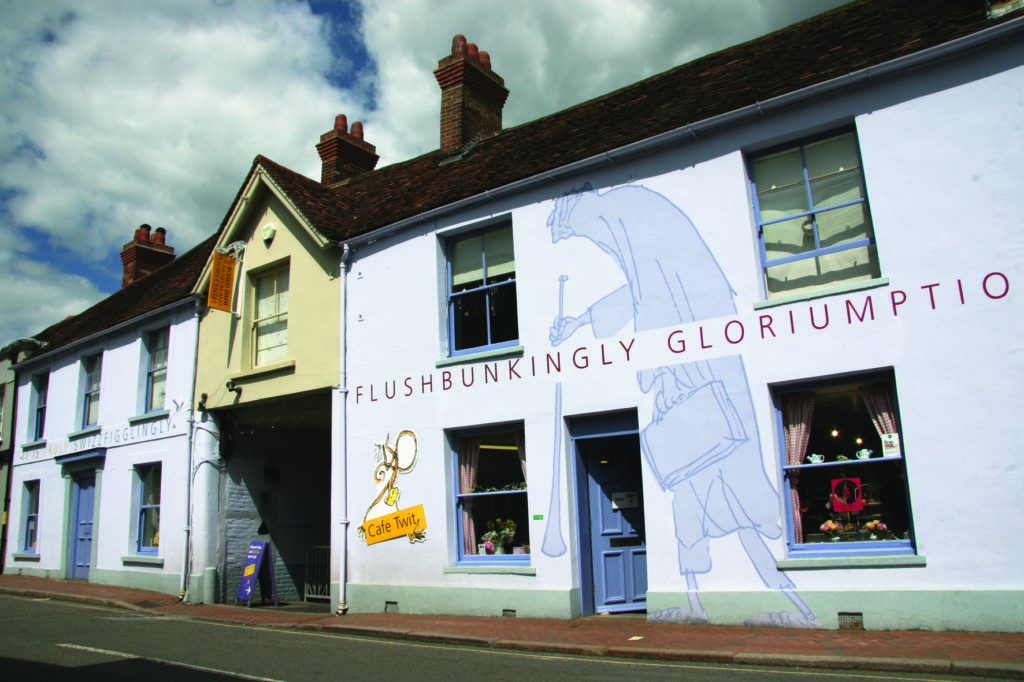
The village and surrounding area provide many links to his stories, such as the old petrol pumps in the High Street, which inspired the description of a garage in Danny the Champion of the World. and the library which the eponymous Matilda visits while her father is at work, her mother playing bingo and her brother at school:
[The librarian] Mrs Phelps, slightly taken aback at the arrival of such a tiny girl unaccompanied by a parent, nevertheless told her she was very welcome.
“Where are the children’s books please?” Matilda asked.
“They’re over there on those lower shelves,” Mrs Phelps told her. “Would you like me to help you find a nice one with lots of pictures in it?”
“No, thank you,” Matilda said. “I’m sure I can manage.”
From then on, every afternoon, as soon as her mother had left for bingo, Matilda would toddle down to the library… two glorious hours sitting quietly by herself in a cosy corner devouring one book after another.
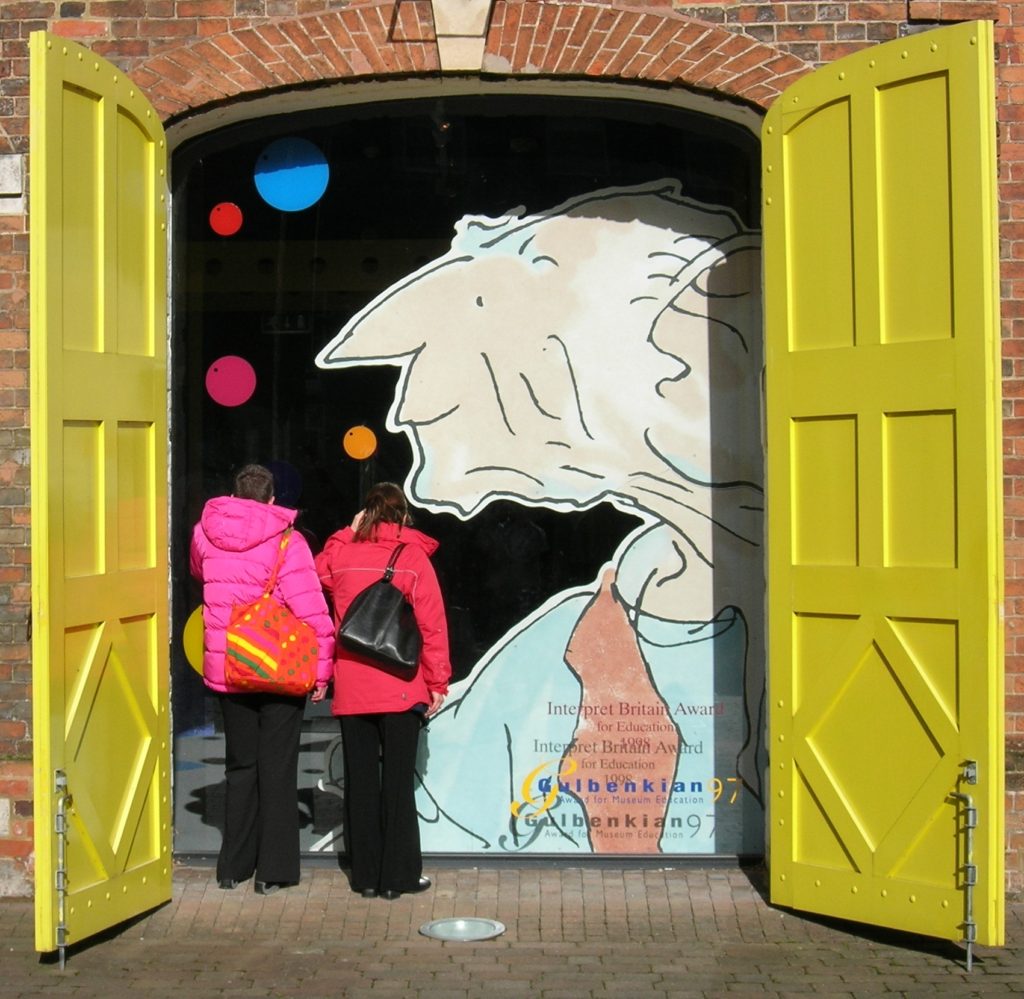
Since 2005, Dahl’s life and work have been celebrated at the Roald Dahl Museum and Story Centre. Enter through its chocolate doors (which do actually smell of chocolate!) and you can explore three galleries.
The Boy Gallery, which illustrates how his experiences influenced his ideas; The Solo Gallery, which reflects on Dahl’s adult life, including his wartime experience in the RAF; and the Story Centre, a creative hub for young visitors to use the museum’s exhibits as inspiration for their own writing.
The Dark is Rising, Susan Cooper
The award-winning fantasy and children’s author Susan Cooper grew up in Burnham; her brother Roderick says that Windsor Castle’s keep, was visible from Susan’s bedroom window.
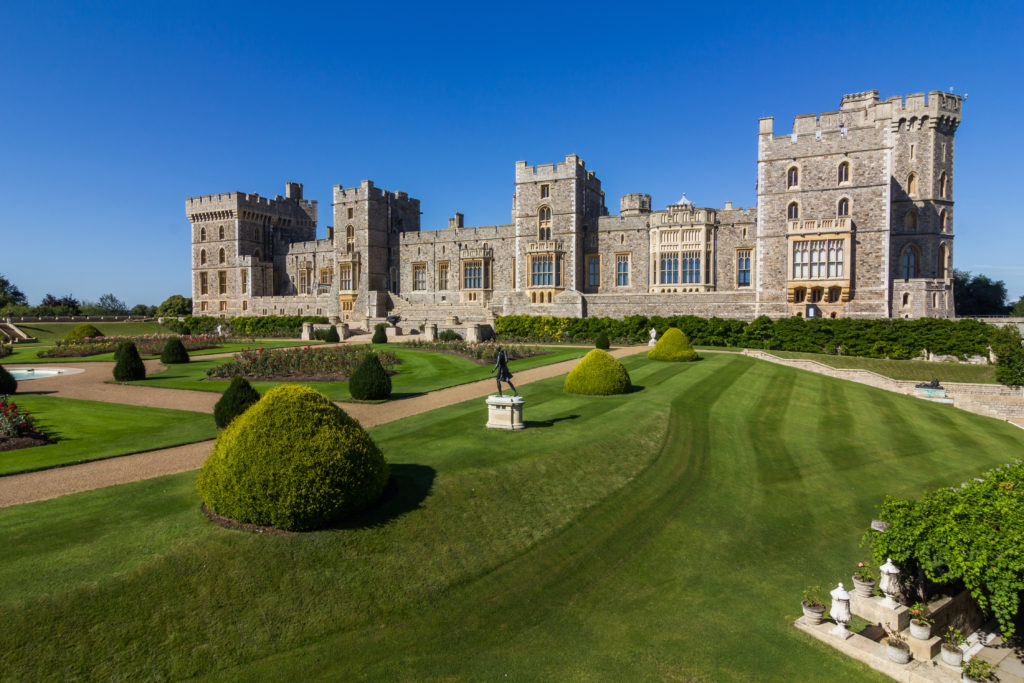
The Chilterns feature in her writing, perhaps most notably in The Dark is Rising:
He saw that they had left his Thames Valley behind. No they were among the curving slopes of the Chiltern Hills, capped with great trees, beech and oak and ash. And running like threads through the snow along the lines of the hills were the hedges that were the marks of ancient fields ery ancient, as Will had always known; more ancient than anything in his world except the hills themselves, and the trees…
And Will was falling, falling… He stood on a snow-mounded hill, with a copse of tall trees capping it far beyond, and two black birds drifting tiny to and fro above the trees.
And before him, standing alone and tall on the white slope, leading to nowhere, were two great carved wooden doors.
Elegy written
in a County Churchyard, Thomas Gray
Four miles east of Burnham, near the southwest door of the Church of St Giles in Stoke Poges, sits an old yew tree. Legend has it that Thomas Gray sat under this tree to write his famous poem.
A stone sarcophagus nearby displays extracts from Elegy. Public subscriptions bought ten acres of the neighbouring fields, so that we can still enjoy the same views that Gray did, and imagine the scenes he depicted:
The curfew tolls the knell of parting day,
The lowing herd wind slowly o’er the lea,
The plowman homeward plods his weary way,
And leaves the world to darkness and to me.
The Human Factor, Graham Greene
The pretty north Chilterns town of Berkhamsted has another name: ‘Greeneland’, because Grahame Greene was born and grew up here.
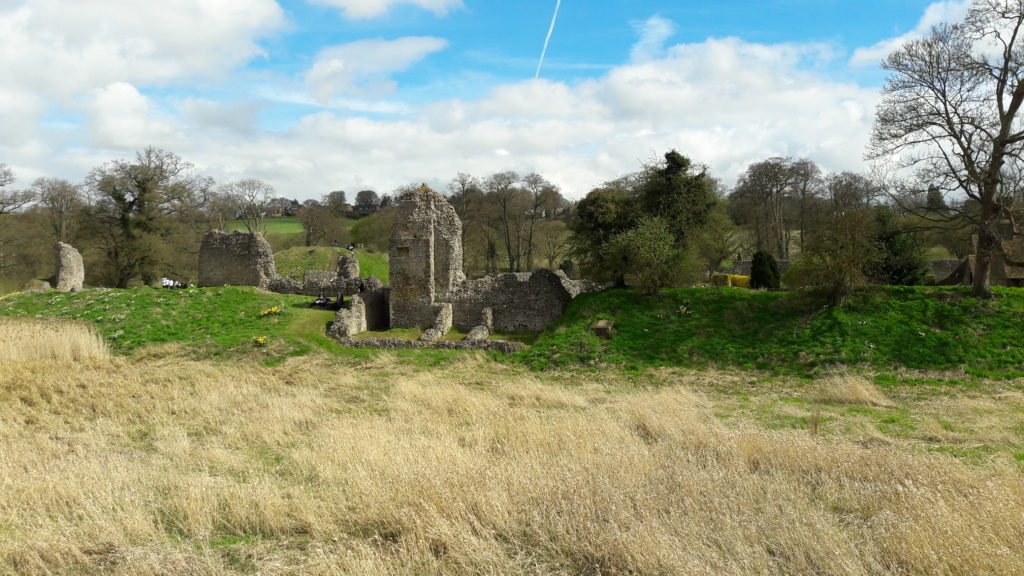
Berkhamsted and its landmarks appear under other names in Doctor Crombie, The Captain and the Enemy, The Innocent and The Basement Room – and as themselves in The Human Factor as the birthplace of the novel’s main protagonist, Castle:
Castle was usually able to catch the six-thirty- five train from Euston. This brought him to Berkhamsted punctually at seven twelve. His bicycle waited for him at the station… he rode the longer way home, for the sake of exercise – across the canal bridge, past the Tudor school, into the High Street, past the grey flint parish church which contained the helmet of a crusader, then up the slope of the Chilterns towards his semi-detached house in King’s Road… when he [had come]back from South Africa, he chose to return to his birthplace: to the canal under the weeping willows, to the school and the ruins of a once-famous castle which had withstood a siege by Prince Louis of France and of which, so the story went, Chaucer had been a Clerk of Works…
(The story, by the way, is true; Geo rey Chaucer was Clerk of Works for Berkhamsted Castle, the ruins of which remain to this day.)
Three Men in a Boat, Jerome K Jerome
If any single book has immortalised the Thames in literature, it’s Jerome K Jerome’s tale of the adventures of J, George and Harris and the dog Montmorency, as they travel from Kingston to Pangbourne.
You can still eat in The Bull at Streatley, where our heroes have lunch ‘much to Montmorency’s satisfaction’, or in The Swan at Pangbourne, where their journey ends.
[From Picnic Point to Old Windsor lock] A shady road, dotted here and there with dainty little cottages, runs by the bank up to the ‘Bells of Ouseley’, a picturesque inn, as most up-river inns are, and a place where a very good glass of ale may be drunk – so Harris says; and on a matter of this kind you can take Harris’s word.
[From Marlow to Cookham] Dear old Quarry Woods! with your narrow, climbing paths, and little winding glades, how scented to this hour you seem with memories of sunny summer days!
[On locks] They are picturesque little places… You meet other boats there, and river gossip is exchanged. The Thames would not be the fairyland it is without its flower-decked locks.
The Wind in the Willows, Kenneth Grahame
Kenneth Grahame spent much of his childhood watching the river’s inhabitants near Cookham Dean and later moved to Pangbourne.
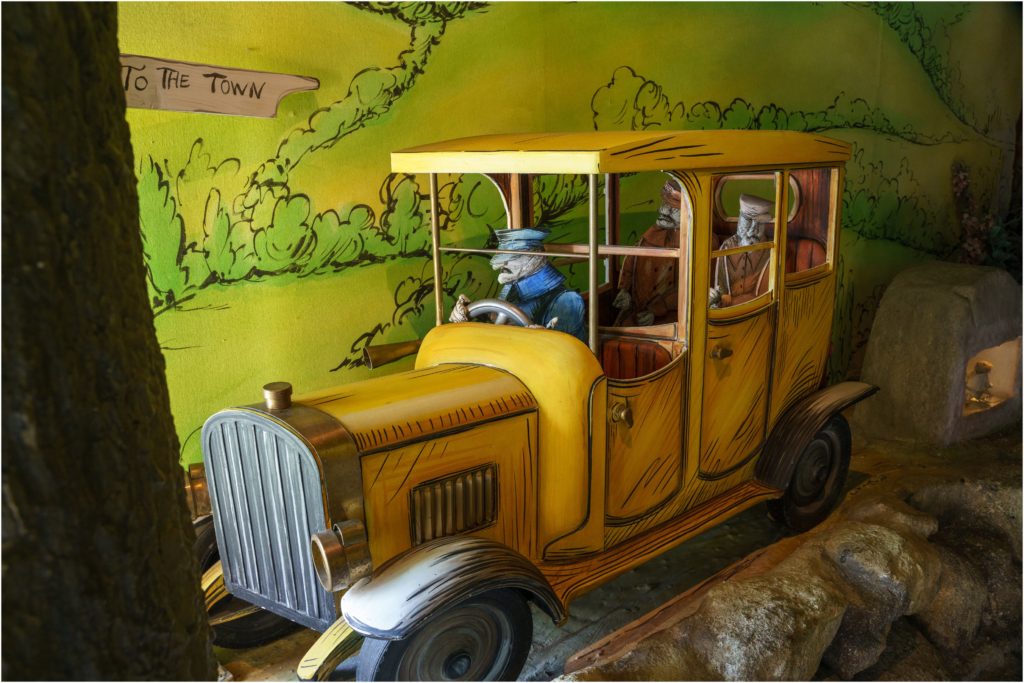
While it isn’t possible to identify specific locations with particular scenes from Wind in the Willows, E H Shepard may well have used Pangbourne and its surroundings for his illustrations, and it’s easy to imagine Ratty, Mole and the others on many parts of the river between Marlow and Pangbourne.
Ozymandias, Percy Shelley
This famous poem featuring a mysterious traveller isn’t set in the Chilterns, of course, but its creation dates to 1817 when the Shelleys were living in Marlow. A friend and fellow poet, Thomas Love Peacock, found lodgings for them opposite his house on West Street; their residence, Albion House, is still standing today.
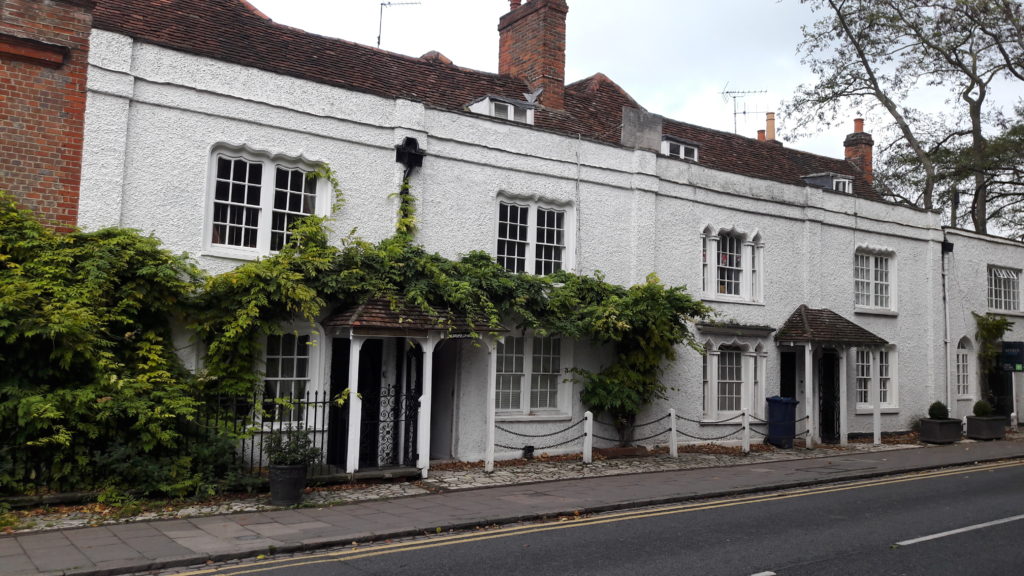
Remarkably, T S Eliot also lived on the same street a century later. During their year-long Marlow sojourn, Mary completed Frankenstein (which she had started the previous summer while staying with Lord Byron at his villa on Lake Geneva) and Percy wrote two notable poems, The Revolt of Islam and Ozymandias:
I met a traveller from an antique land
Who said: `Two vast and trunkless legs of stone Stand in the desert. Near them, on the sand, Half sunk, a shattered visage lies, whose frown, And wrinkled lip, and sneer of cold command,
Tell that its sculptor well those passions read
Which yet survive, stamped on these lifeless things,
The hand that mocked them and the heart that fed.
And on the pedestal these words appear –
“My name is Ozymandias, king of kings:
Look on my works, ye Mighty, and despair!” Nothing beside remains.
Round the decay Of that colossal wreck, boundless and bare
The lone and level sands stretch far away.’
And finally…
The Chilterns, Rupert Brooke
Two miles south of Princes Risborough sits the Pink and Lily, a private house converted into a hostelry in 1800. Rupert Brooke used to go for walks around here, and to drink in the Pink; there’s a portrait of him above the replace.
We couldn’t finish without quoting from his poem about the Chilterns, and wishing all our local inns and businesses, the best of luck in these difficult times. Let’s hope that locals and visitors alike can continue to enjoy their hospitality for many years to come:
Thank God, that’s done! and I’ll take the road, Quit of my youth and you,
The Roman road to Wendover
By Tring and Lilley Hoo,
As a free man may do…
I shall desire and I shall find
The best of my desires;
The autumn road, the mellow wind that soothes the darkening shires. And laughter, and inn-fires.
More information
Helen and Neil Matthews have lived in the Chilterns since 1991 and have spent the last 30 years exploring and writing about the region’s hidden corners and little- known treasures. In 2019, they joined our Slow Travel family with the publication of The Chilterns & the Thames Valley, available on our website.
